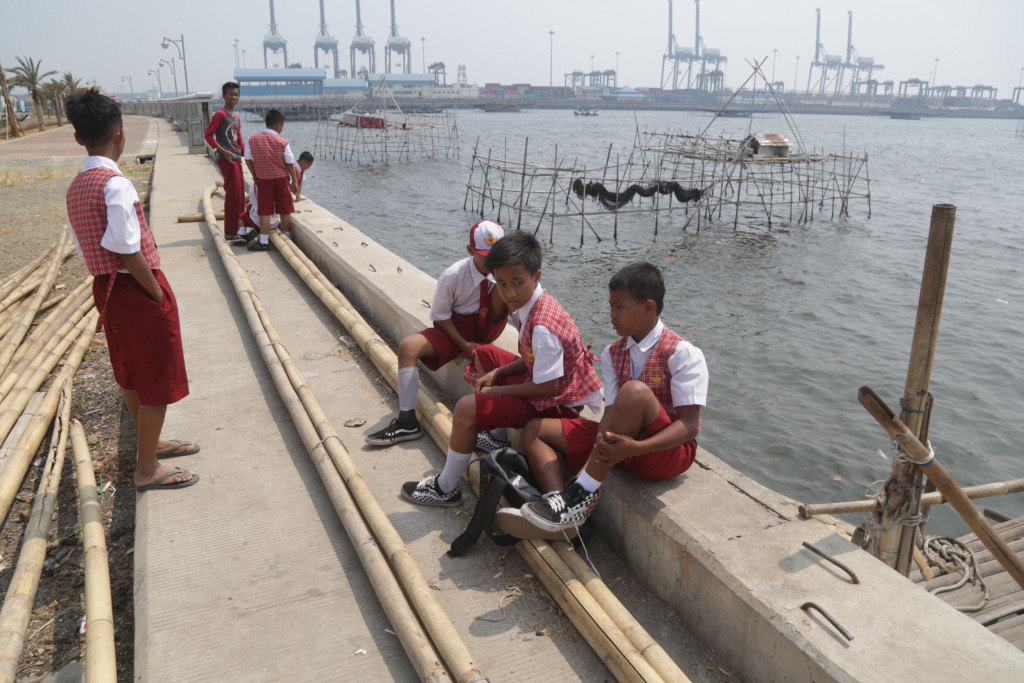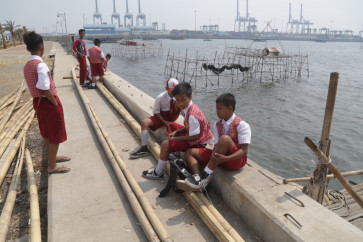Popular Reads
Top Results
Can't find what you're looking for?
View all search resultsPopular Reads
Top Results
Can't find what you're looking for?
View all search resultsGiant seawall may cause bigger problems: Activists
Activists argue that a sea dike would not stop Jakarta from sinking further.
Change text size
Gift Premium Articles
to Anyone
T
he government’s newest proposal for phase two of Jakarta's outer sea dike project — previously referred to as a giant seawall or the Great Garuda — has raised questions and concerns from activists and scholars who warn of the potential environmental and social costs of the mega project.
The Public Works and Housing Ministry, which is in charge of the project, is preparing to send its proposal for the new concept to the President. The ministry signed an agreement with its counterpart from the Netherlands and South Korea last month for the sea dike’s construction.
Officially called National Capital Integrated Coastal Development (NCICD) project, the sea dike’s primary function is to reduce the threat of tidal floods in Jakarta as a result of land subsidence. Experts have warned that the capital was sinking at a rapid rate in some areas, especially in West and North Jakarta.
Speaking to The Jakarta Post, Bogor Institute of Agriculture's School of Maritime Affairs and Fisheries professor Etty Riani said any form of development would have an environmental impact, but the negative impacts should be minimized through technology.
“Please be [thorough] in making an environmental analysis document [Amdal]. When deciding on a location for a reclamation project, assess the [marine] area’s ecological conditions. Do animals use it as a spawning ground or nursery ground? Assess [the location] first, then decide," she said.
"If the water is already heavily polluted and has lost its ecosystem, the area could be reclaimed — but it all depends on the [environmental conditions]. Conduct a study on the carrying capacity and environmental capacity. Mitigation must start from the beginning [of a reclamation project].
The NCICD project, which will cost Rp 262.2 trillion (US$18.6 billion) in total, will include 2,000 hectares of reclaimed land for commercial purposes.


















